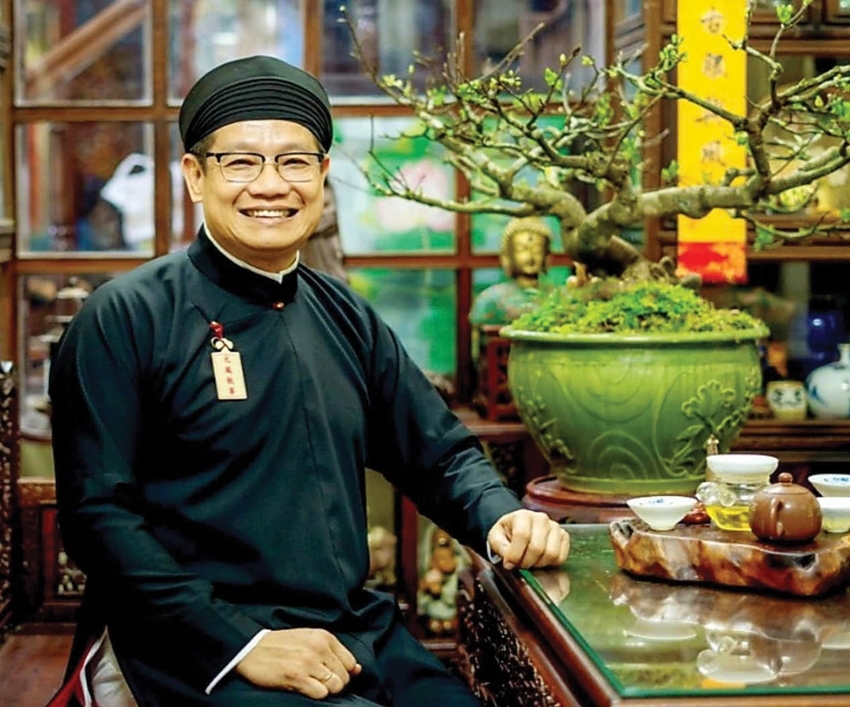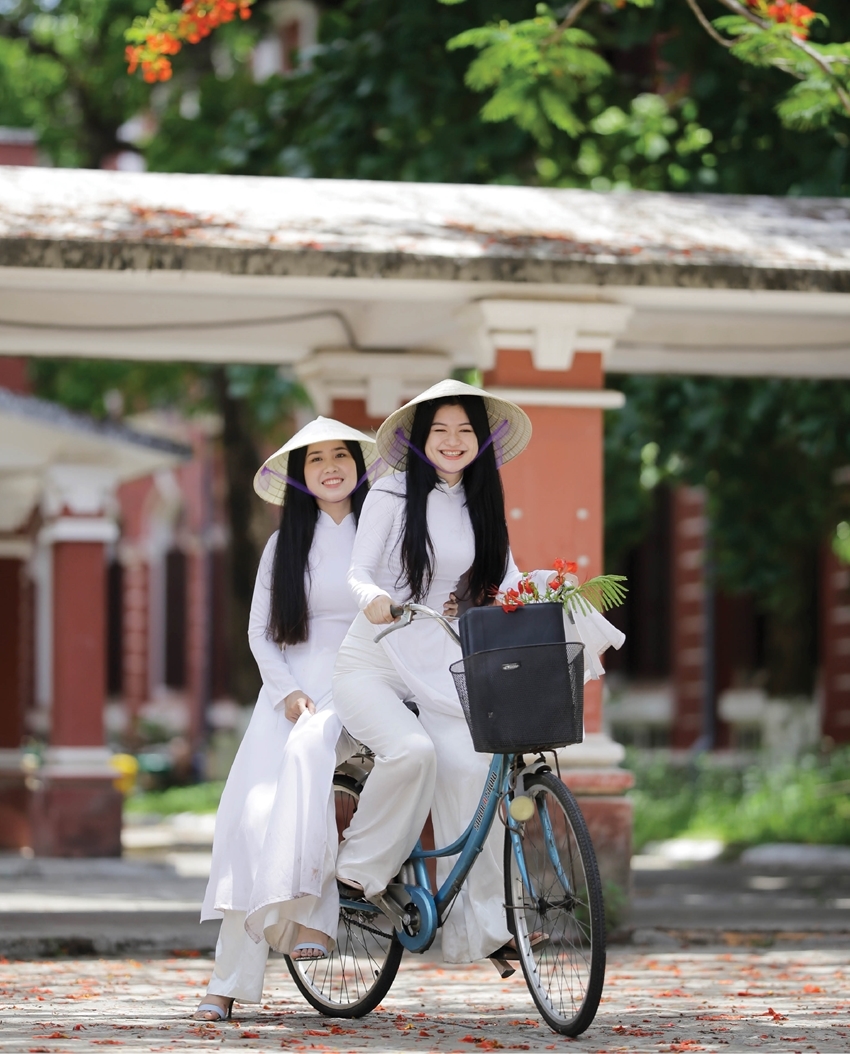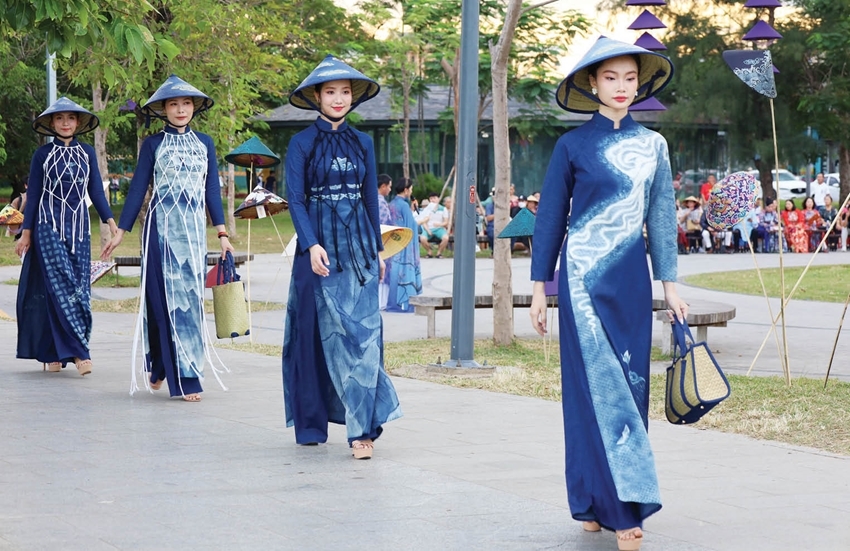 |
| Mr. Phan Thanh Hai, Member of the National Cultural Heritage Council, Director of the Department of Culture and Sports of Thua Thien Hue Province |
"Over the past five years, the efforts to preserve and promote the values of Hue Ao Dai not only have been persistently carried out through many practical and meaningful activities of the cultural sector, artisans, designers and the Ao Dai-loving community in Hue, but also have spread throughout the country. Now, it has been recognized and honored as a National Cultural Heritage by the State,” said Mr. Hai.
As far as I’m concerned, the submission was named “The Ao Dai Tailoring Craft and the Custom of Wearing Hue Traditional Ao Dai.” However, it was officially enlisted as “Knowledge of Tailoring and Wearing Hue Ao Dai.” This concept has confused many people, so can you further elaborate on that?
It is true that there are differences between the names in the Province’s submission and the Decision of the Ministry of Culture, Sports and Tourism. However, in terms of semantics, the names “Knowledge of Tailoring and Wearing Hue Ao Dai” or “The Ao Dai Tailoring Craft and the Custom of Wearing Hue Traditional Ao Dai” have the same meaning, both reflecting the attributes of Hue Ao Dai, which are “Knowledge of Tailoring” and “The Custom of Wearing Ao Dai of Hue people”. These are also the values of Intangible Cultural Heritage that are being preserved, practiced, and passed down within the community throughout the past time in Hue.
 |
| Hue female students in white Ao Dai. Photo by: Minh Thu |
The Ministry of Culture, Sports and Tourism conferring the title of National Intangible Cultural Heritage on “Knowledge of Tailoring and Wearing Hue Ao Dai” has opened up many opportunities for Hue to preserve and promote Hue Ao Dai in contemporary life, contributing to promoting Vietnamese culture and Hue culture through the image of Ao Dai.
How did the process of implementing this dossier take place, Sir?
The building of the Ao Dai heritage dossier, as well as other tangible and intangible heritages in the past time, has been seriously and scientifically carried out, ensuring the steps according to regulations. During this process, the Department of Culture and Sports has always received close guidance from the Provincial People’s Committee, the attention and support of the Ministry of Culture, Sports and Tourism, as well as the coordination of all levels, sectors, designers, artisans, and Ao Dai tailoring establishments in the province.
The cultural and historical values of Ao Dai that were once associated with Hue Ancient Capital, together with the image of Ao Dai and its influences that left a deep impression on the lives of the people of Hue, are the basic advantages when building the dossier of Intangible Cultural Heritage of Hue Ao Dai. Along with that are the efforts of the cultural and sports sectors, the companionship of agencies, units, researchers, artisans, people who love cultural heritage in general and Ao Dai in particular. Especially, after being approved by the Provincial People’s Committee, the project “Hue – The Capital of Ao Dai” created motivation for us to quickly complete the dossier to submit to the Ministry of Culture, Sports and Tourism for approval.
We have made great efforts to do a great job to spread the beauty, as well as the cultural and historical values of Hue Ao Dai through promotion and implementation of many events and activities related to Ao Dai so that the community can see the benefits of restoring the image of Ao Dai in contemporary life, promoting the development of culture and tourism.
After being enlisted as a National Intangible Cultural Heritage, how will the strategy to promote and develop the value of this type of heritage be implemented, Sir?
Over the past years, the promotional activities of Ao Dai initiated by us have had great significance in properly shaping public perception of the Vietnamese national costume.
“Knowledge of Tailoring and Wearing Hue Ao Dai” being honored as a National Intangible Cultural Heritage further proves that the promotion of Ao Dai by the cultural sector has gone in the right direction and achieved certain results. We always consistently identify that promoting Ao Dai is a crucial practice that Thua Thien Hue Province has always carried out throughout the implementation of the Project “Hue - The Capital of Ao Dai”.
 |
| Ao Dai performance during the 2024 Hue Community Ao Dai Week |
In particular, after this Intangible Cultural Heritage was enlisted, the cultural sector is even more determined to make efforts with other sectors and localities to actively coordinate to build the image and strengthen the promotion of Ao Dai through the implementation of very rich and diverse contents and activities in the Project “Hue – The Capital of Ao Dai” according to the roadmap approved by the Provincial People’s Committee; affirming that Hue is the cradle of birth, nurturing and development of the traditional Vietnamese Ao Dai.
What does this good news mean to artisans and businesses involved in the tailoring industry in Hue?
While Thua Thien Hue has dozens of traditional craft villages and many different industries, so far, only “Zèng Weaving” and “Knowledge of Tailoring and Wearing Hue Ao Dai” have been honored as National Cultural Heritage. This is proof that the tailoring industry and the custom of wearing Hue Ao Dai have been affirmed in value on a national scale. This is of great significance, acting as a source of professional pride for the tailoring community not only in Hue but also nationwide.
This meaningful event will create a new breeze, being a driving force for artisans, designers, and businesses involved in the tailoring industry to be dedicated to strive and contribute, to continue to affirm the unique and distinctive value, to constantly enhance the position and influence of Hue Ao Dai not only domestically but also internationally. This is also a good opportunity for them to develop their profession, build and enhance their personal and business brands. The locality also has the opportunity to promote the development of the cultural industry, of which the Ao Dai will be one of the main products.
On this occasion, we would like to express our sincere thanks to the positive contributions of artisans, designers, and businesses - those who hold the knowledge of tailoring Hue Ao Dai, and have devoted themselves to preserving and promoting the tailoring industry of Ao Dai with extremely special knowledge so that Hue can have the precious heritage of today.
As you shared, after being inscribed in the list of National Heritage, the Department will advise the Provincial People’s Committee to carry out procedures to build the dossier to submit to UNESCO for inscription in the Representative List of Intangible Cultural Heritage of Humanity. So, can you share a few things about this journey?
The process of building a dossier to submit to UNESCO for inscribing Ao Dai in the Representative List of Intangible Cultural Heritage of Humanity requires a specific roadmap complying with strict procedures, as well as the efforts of relevant agencies, departments, and localities. Currently, we are also advising the Provincial People’s Committee to select a list of tangible and intangible cultural heritages of Thua Thien Hue to include in the dossier development plan, so it is also necessary to consider resources and build a specific implementation roadmap.
I always believe that, with the direction of the provincial leaders, the attention of the Ministry of Culture, Sports and Tourism, along with the support and companionship of agencies, units and localities, Hue Ao dai will soon be incribed in the UNESCO Representative List of the Intangible Cultural Heritage of Humanity in the shortest time.
Finally, from your perspective, in addition to the recognized status and title, what is key to spreading Ao Dai in real life?
Intangible Cultural Heritage is held by the community, so the community must directly participate in the work of preservation, promotion and development as the subject. Therefore, the community holding the heritage needs to be aware of its role and responsibility, quickly approach and proactively participate in the journey of preserving and promoting the value of folk knowledge that has been inscribed in the List of National Intangible Cultural Heritage by the Ministry of Culture, Sports and Tourism. The preservation and promotion of values must come from two folk knowledge values, which are “tailoring” and “the custom of wearing” Hue Ao Dai, and these two values must be implemented in parallel.
Hue Ao Dai being honored as a National Intangible Cultural Heritage lays an essential foundation, bringing development opportunities to the tailoring profession and the custom of wearing Hue Ao Dai. Along with the project named “Hue - The Capital of Ao Dai” that is being actively implemented by all levels of cultural sectors and branches, we hope that Hue Ao Dai will have “space” to develop and continue to affirm its brand and position.
Thank you for the conversation!
